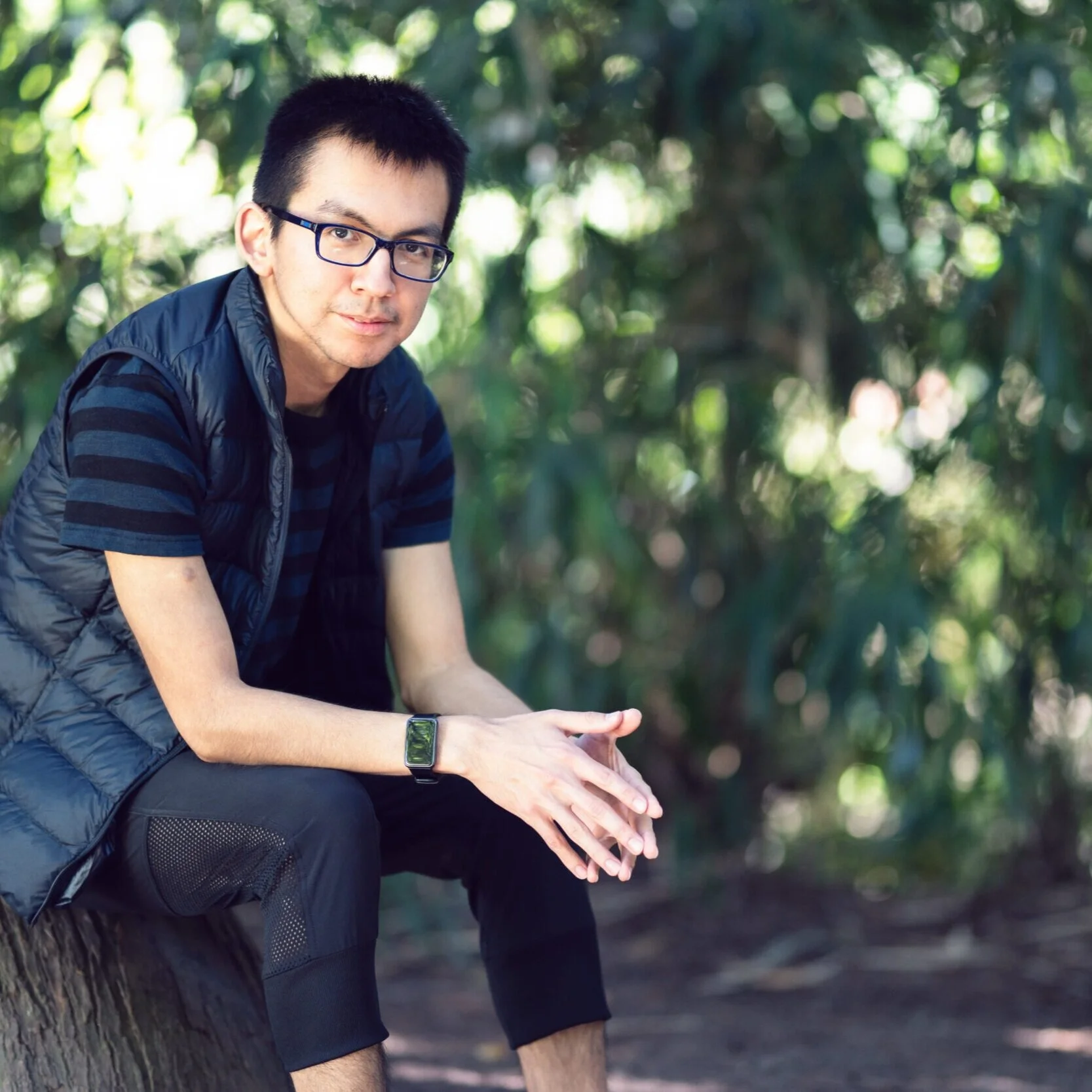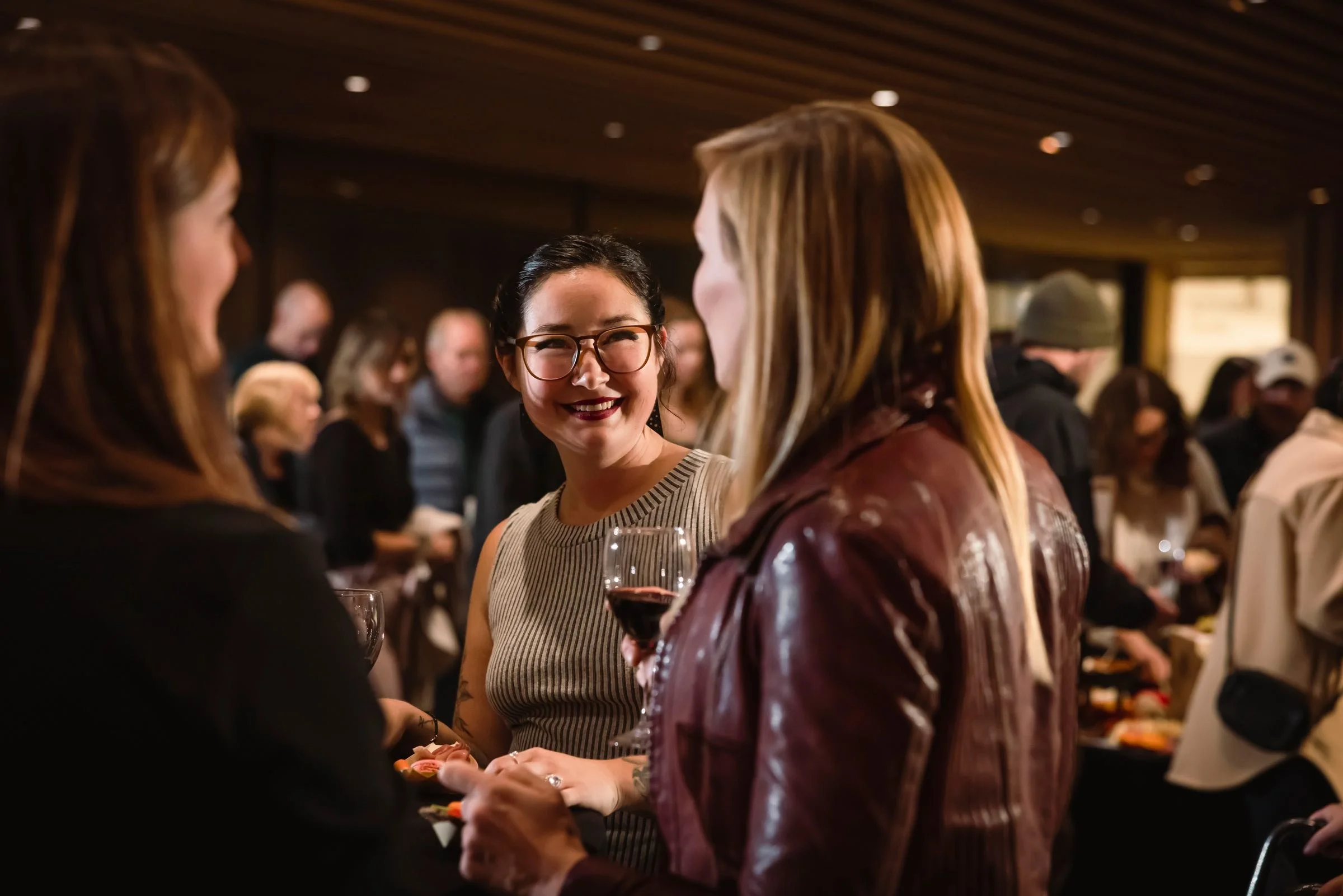Theatre review: Gather: Stories in Nature stages intimate tales of self-discovery under trees of Queen Elizabeth Park
Solo artists Cameron Peal and Shayna Jones take different looks at our relationship to the land
Cameron Peal. Photo by Kathryn Nickford Photography.
Shayna Jones. Photo by Kathryn Nickford Photography.
Pacific Theatre and Neworld Theatre present Gather: Stories in Nature at Queen Elizabeth Park until August 14.
WHEN SHAYNA JONES’S Miriam needs to ground herself, she digs her fingers frantically into the dirt of her garden.
It’s one of the more literal connections with the land that the intimate, quietly mesmerizing new double bill Gather: Stories in Nature portrays.
While the two specially commissioned solo artists, Jones and Cameron Peal, engage with the environment, so do we as part of the small audience. There’s something quietly magical about sitting on a picnic blanket under the shade of cedars in Queen Elizabeth Park, leaves and sticks crackling as you shift your weight, listening to stories being told.
Collaborators Chelsea Haberlin (artistic director at Neworld) and Kaitlin Williams (artistic director at Pacific Theatre) envisioned the outdoor piece as “an antidote to the digital realm” we’ve been immersed in for the past 18 months or so.
And so Gather feels authentically grassroots—just as it takes place on the grass. The two pieces offer contrasting styles. Studio 58 grad Peal’s is a deeply personal meditation on his own Nisga’a heritage and the way it influences his life and worldview as an urbanite. Jones’s piece finds the storyteller acting out a riveting personal drama about a wife and mother reaching a turning point. What they have in common is not just their connections to nature and its healing power, but the journey to self-discovery—something we’ve all been wrestling with in this long, forced pause of reflection.
The creative team have found two atmospheric corners of the picnic area for the works to take place, fiddler Kathleen Nisbet leading us between the two locales (and, on occasion, subtly underscoring some of the most salient points in the performances).
Peal speaks under the embrace of a cedar whose branches curve and reach like arms. It’s an apt setting for one of the central metaphors in his unaffected reflections. Midway through, he talks about how his Indigenous people carefully strip cedar bark in a way that will leave no lasting scars on the tree—and how the baskets and other gifts they weave from that bark will eventually return to the earth.
Peal connects the dots of ancient teachings, modern consumerism, and even Buddhism in a free-ranging but coherent and engaging rumination on how we treat the earth, and how we need to move beyond the “wanting mind”.
Under a group of trees whose low branches are hung with woven fabrics and wooden beads, Jones takes a more theatrical approach to storytelling. Hers is a work that is a much deeper, provocative call to agency and racial-cultural awakening than you might normally expect from a summer evening in a park.
Jones draws on traditions of oral storytelling in African and Afro-Diasporic folklore. But her subject is urgently contemporary, about a woman striving for perfection in her home, her career, and her marriage—but who feels a “hunger” rising in her.
The piece is full of taut and rawly poetic metaphors. One of the most effective and affecting is of garden soil riddled with sharp granules of glass—a leftover from a house’s previous owner, who tried to use the shards to ward off slugs. The dirt heals Miriam, but there’s going to be pain and suffering in the process too.
Jones hands in a fearless and passionate performance, riveting under the shade of the trees as the sun sets.
Behind the scenes, the title Gather takes on even more meaning, bringing together a commendable team of artists—including codirection by Lois Anderson (Buffoon, Pericles) and Kelsey Kanatan Wavey (Skyborn: a Land Reclamation Odyssey). And so just as it posits new ways of moving forward in the post-pandemic world, this show—in its small, low-tech way—also models fresh collaborative modes of moving forward in the arts. That it also just happens to be a very pleasant way to get out of the house and spend a summer evening with a friendly group of strangers is just the bonus.














